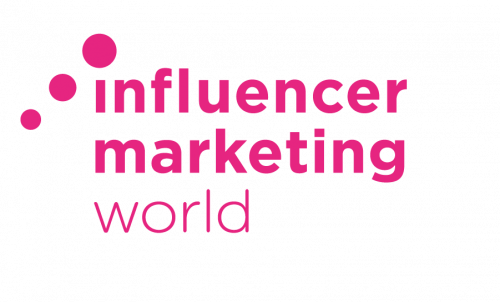Share

Trigger warning: This piece contains reference to eating disorders and substance abuse. If you or someone you love is in crisis, proceed with caution, and reach out to Butterfly for support.
After years of building every body up, we’re about to tear everything down – and discard our principles in the process.
From Paloma Elsesser gracing the cover of U.S. Vogue’s December 2020 issue, to Ashley Graham’s overall commercial superstardom, it had appeared that we were out of the woods when it came to diversity, representation and inclusion within the world of fashion. Finally we were moving away from a very specific type of body that would usually be seen strutting down a runway, or adorning the front covers of international fashion bibles. In the creative industry, we’ve seen more of the same – mums that look like real mums, able and disabled bodies running in the same race, and a more accurate representation of what the real world looks like in creative campaigns. Yet, with the New York Post’s November article ‘Bye-bye booty: Heroin chic is back’, it looks like we’re tinkering on the precipice of taking a bountiful leap backwards.
First things first – “heroin chic” isn’t cool. It’s actually terrifying.
The term “heroin chic” is an oddly familiar and dark one, drawing parallels to something that isn’t as glamorous as nostalgia wishes to believe. Popularised by 90s it-girls and photographers eliciting ‘strung-out’ expressions for campaign shoots, the commodification of addiction, and often eating disorders, took pop culture by storm. The obsession continued with famous women’s bodies and speculations around their drug of choice subsequently featured in heavy coverage of both in tabloids, largely seen in the early 2000s to mid 2010s. It’s hard to ignore the impact that fashion trends have had on the creative industry and media at large, and the ability that spring/summer shows have on shifting the minds of millions of women. With the supposed return of this “aesthetic”, we’re again walking a very thin line, and it has the power to hurt younger generations across the globe.
The thing is that trends creep up on you so slowly. It happens that one day you’re ordering your 60-year-old dad Crocs with personalised Jibbitz for Christmas. The only thing is – the Crocs in question are cute, not seriously life-threatening. We can’t ignore that the so-called return of “heroin chic” has been a slow burn. Perhaps distracted by genuine or sometimes performative inclusivity, we seem to forget the power that the human body holds in the creative industry – sometimes leaving us wondering if it’s “sex” or “skinny” that truly sells.
Despite the threat of “heroin chic” returning to the masses, there is something important to call out – in no way should we be skinny shaming either. Every body is created differently, and we can’t ignore that some fall into the aesthetic of “heroin chic”. There are many women across the world with an inability to gain weight, no matter how hard they may try. Yet, with roughly one percent of Australians classified as underweight in a nationwide survey, brands – the fashion industry and beyond – would have you thinking this was the majority of Australians, or the default so to speak.
According to a global study, 65 percent of consumers believe that it’s important that the companies they buy from actively promote inclusion and diversity in their own business, or promote it to society as a whole. From a commercial perspective for brands, promoting fair and equal representation across the board can actually directly affect a business’ return-on-investment. So why are some brands so hesitant to adapt, and acknowledge that the consumers who interact and purchase their products, or buy into their messaging, all look completely different?
It’s not all doom and gloom though. When looking at Australian brands operating in the intimates space in Australia, brand Modibodi’s continued plight to banish social taboo’s around menstruation rings true with menstruators, ensuring its period-related content isn’t gendered. When looking at sustainable intimates and loungewear brand Boody, its e-commerce and campaigns cast talent of different sizes, races, gender-identities and ages to showcase its product range. There are most certainly brands driving the accurate representation of Australian society in its creative outputs, and dedication to the breaking down of social stigma – it is becoming more and more prevalent. So, let’s keep it up. For the love of our mental health, please.
It’s these kinds of “body” trends that hold the power to take over all creative materials we see, and honestly can impact so many lives in such a negative way. As a woman, thinking of the way I saw myself ten years ago, versus now – it would be hard to ignore the impact that advertising, and media as a whole, had on my self-esteem, and the way I saw myself as a woman of colour in Australia. And with the threat that “heroin chic” is back, it’s nerve wracking. We all have a part to play. And no, we can’t, and shouldn’t, keep blaming it on the Kardashians. There are so many more people in the room who need to take responsibility here.
So, where do we go from here?
As creatives, we often craft and guide an initial brand’s brief, it’s important to outline the impact that creative campaigns can have – outside of its potential revenue return. We want to ensure that brands are contributing to positive cultural movements, not perpetuating ones rooted in generating low self-esteem for the consumer. Cultural trends may come and go, but the prioritisation of one’s well-being and overall health will never wane. And if these trends are too hard to resist? Create your own. It’s integral to realise there is an opportunity to not just react to trends, but to drive them – and drive them for the better. Especially when projected trends have the power to undo recent years of positive change, and individual betterment.
We can do better, and we have to. We’re all counting on change – in the right direction.















